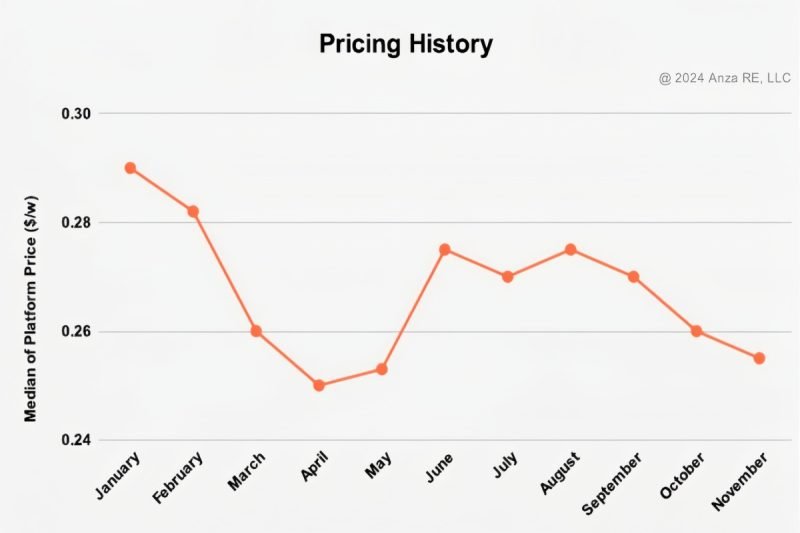Solar Module Prices Vary Depending on Domestic Cell Availability
The Pricing Dynamics of Solar Modules in a Changing Market
The pricing of solar modules continues to fluctuate as the market adjusts to various policy changes and supply dynamics. In the second quarter (Q2), Anza, a major solar module marketplace, reported that the imposition of the AD/CVD tariff petition on solar module imports from Southeast Asia (SEA), along with the removal of the Section 201 tariff exemption for bifacial modules, led to a price increase. However, in Anza’s Q4 Pricing Insights Report, the situation has shifted. Due to an oversupply of imported modules—brought in before the new AD/CVD duties took effect—prices have started to drop. At the same time, the prices for U.S.-manufactured modules are diverging, with differences emerging based on the supply of solar cells. These shifts directly impact buyers looking for reliable components like LiFePO4 battery systems (24V and 48V) to optimize their solar power solutions.
Overview of Anza’s Pricing Report
Anza’s U.S. Distributed Generation Q4 Solar Module Pricing Insights Report provides data based on median Distributed Generation (DG) list prices from over 35 module vendors active on the Anza platform, which together represent more than 95% of the U.S. solar module supply. This includes insights critical for anyone investing in solar energy systems that integrate batteries and advanced solar power technologies for efficiency.
U.S. Solar Module Price Trends
Modules featuring U.S.-produced cells have experienced a notable 13% price increase between August and November, driven by buyer interest in these products to maximize incentives under the Inflation Reduction Act (IRA). Despite the price hike, demand remains robust, indicating that buyers are willing to pay a premium for domestic components in order to qualify for valuable tax credits. These modules often pair well with energy storage systems like 24V or 48V lithium batteries, enabling households and businesses to harness the full potential of their solar power setups.
On the other hand, modules containing imported cells but assembled in the U.S.—and thus not qualifying for the domestic content tax credit adder—saw a 10.4% price decline during the same period. This price difference can influence decisions for buyers seeking cost-effective solar energy solutions while balancing storage needs.
Anza also highlights that not all U.S.-made modules are equally prioritized by buyers when it comes to incentive strategies, suggesting that the market is becoming more discerning based on the specifics of domestic content. For consumers considering storage, investing in battery systems (24V or 48V) may further optimize overall energy efficiency and qualify for additional benefits.

Price Trends for Imported Modules
For fully imported modules, prices declined by 5.8%, showing a more moderate decrease. Pricing has remained relatively stable with only minor fluctuations, as some buyers continue to opt for these more affordable options, particularly for larger-scale projects where integrating solar power systems with Tier 1 or Tier 2 modules is critical.
Interestingly, Tier 1 module prices saw a significant 14% drop between August and November, while Tier 2 prices remained unchanged. This suggests that the recent changes in AD/CVD duties have had a more pronounced impact on Tier 1 manufacturers compared to Tier 2. Buyers leveraging Tier 1 modules alongside high-capacity 48V batteries may still find cost-effective ways to scale their solar energy systems for greater output.
Conclusion
These trends point to an increasingly differentiated pricing structure, with buyers carefully balancing the cost of solar modules with the incentives tied to domestic content. As the market adjusts, module prices are being influenced not just by production costs, but by the origin of both the solar cells and the final assembly. For optimal energy performance, integrating compatible components like battery storage (24V or 48V) into solar power systems is becoming essential. The focus on domestic content, combined with reliable energy storage, ensures that buyers can maximize incentives while meeting their solar energy goals efficiently.


